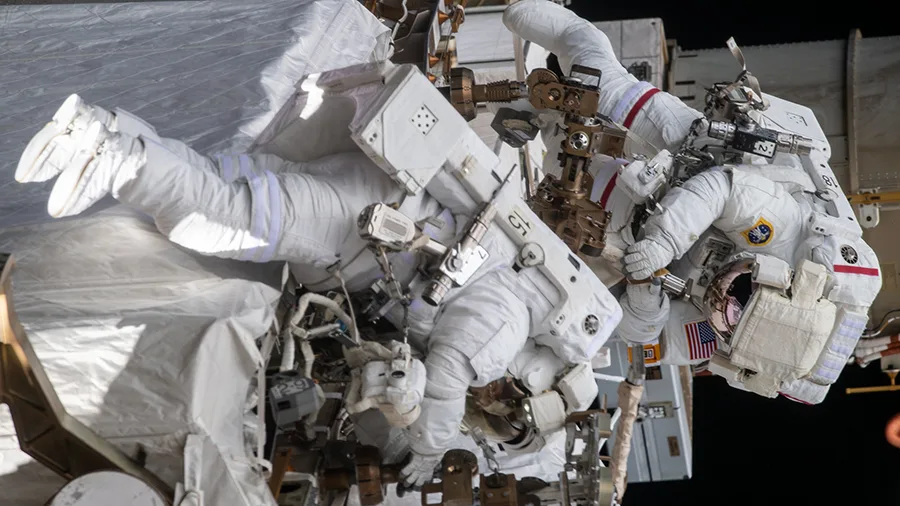
First ever all-women spacewalk is now in the history books
This is a long-overdue event in the history of human space exploration
Friday was a historic day in human space exploration.
After a total of 220 spacewalks conducted, 42 of which that have included a woman astronaut, NASA has finally conducted its first all-women spacewalk.
Starting at 7:50 a.m. ET, on October 18, 2019, NASA astronauts Christina Koch and Jessica Meir opened up the Quest Airlock and ventured outside the International Space Station for a 7-hour and 17-minute spacewalk.
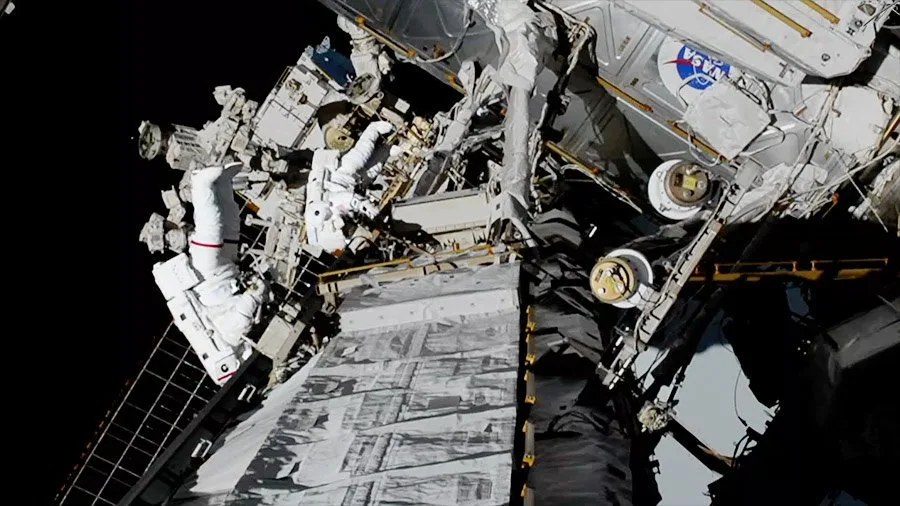
Christina Koch (with the red stripe) and Jessica Meir on their Extravehicular Activity (EVA) on October 18, 2019. Credit: NASA TV
This was the fourth spacewalk for Koch, and the very first for Meir. According to NASA, Meir is now the 15th women spacewalker in human history, and the 14th American woman to conduct an EVA.
To highlight the importance of the event, NASA included an all-women commentary team on the ground - communications specialists Brandi Dean and Courtney Beasley, and astronaut Anne McClain.
Koch and Meir's job during this excursion was to replace a malfunctioning power regulator, which is used to transfer power from the space station's solar panels to its batteries. NASA says that this particular power regulator, known as a Battery Charge/Discharge Unit (BCDU), has been in continuous operation on the ISS since 2000, but it failed to activate after an October 11 spacewalk.
According to NASA: "The BCDU failure has not impacted station operations, safety of the crew, or the ongoing experiments aboard the orbiting laboratory, many in preparation for future human missions to the Moon and Mars. The station’s overall power supply, which is fed by four sets of batteries and solar arrays, remains sufficient for all operations. However, the faulty power unit does prevent a set of batteries installed earlier this month from providing increased station power."
Originally scheduled for five and a half hours, this 221st spacewalk (the 43rd with at least one woman participating) wrapped up at 2:55 p.m. ET, after 7 hours and 17 minutes.
NASA has reported that, after it was installed, mission control activated the newly installed BCDU, and that it is operating properly. Now that it has been replaced, NASA can now reschedule the remaining battery upgrades.
Although the replacement of the BCDU was their primary objective, Koch and Meir also performed some "get-ahead tasks". This included attaching a new support post (stanchion) on the station's Columbus module, which will be used to mount a new payload platform, called Bartolomeo, which the European Space Agency will launch to the station next year.
This latest spacewalk is the eighth of 2019, and it follows a previous attempt at an all-women EVA, back in March. At that time, Koch was scheduled to venture outside the station with NASA astronaut Anne McClain. However, the spacesuits on hand were too large for McClain, so she opted to let Nick Hague, a fellow NASA astronaut, take her place.
While the crew assigned to these spacewalks was only coincidental - it was not planned as an all-women spacewalk, but just came up that way in the schedule. With more women taking part in human spaceflight programs, this was inevitable.
This should not diminish the importance of the event, however.
"Not to overshadow the fact that women have been doing spacewalks for 35 years," said NASA astronaut Tracy Caldwell Dyson, who flew on the Space Shuttle Endeavour in 2007 and was on the Space Station in 2010. "As much as it is worth celebrating the first spacewalk with an all-female team, I think many of us are looking forward to it just being normal."
What would that "normal" look like? Going forward, we may soon reach a time when we have all-female EVA teams, without ever feeling the need to mention that there's anything special about that, at all.
NEW SPACESUITS
Earlier this week, NASA unveiled two new spacesuits, meant to be used by astronauts travelling to the Moon and Mars.
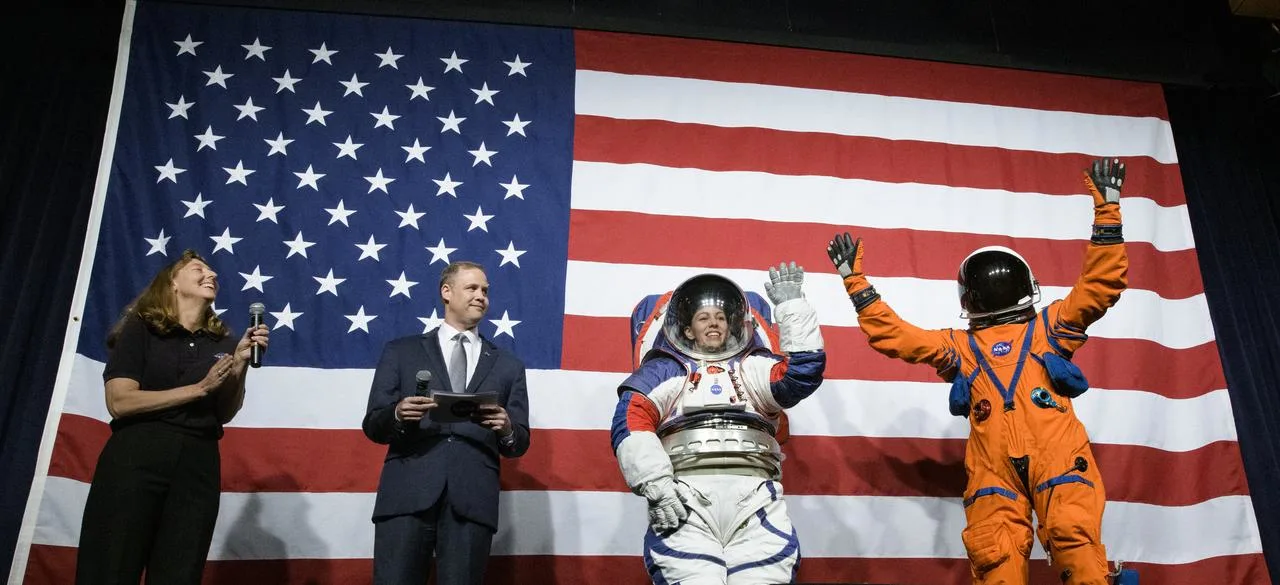
From left to right: Amy Ross, a spacesuit engineer at NASA's Johnson Space Center, NASA Administrator Jim Bridenstine, Kristine Davis, a spacesuit engineer at NASA's Johnson Space Center, wearing a ground prototype of NASA's new xEMU, and Dustin Gohmert, Orion Crew Survival Systems Project Manager at NASA's Johnson Space Center, wearing the Orion Crew Survival System suit. Credit: NASA/Joel Kowsky
The Exploration Extravehicular Mobility Unit (xEMU) suit, worn at Tuesday's event by NASA spacesuit engineer Kristine Davis, is meant to be the new 'vehicle' of choice for astronauts venturing out onto the surface of the Moon, or in the farther future, the surface of Mars.
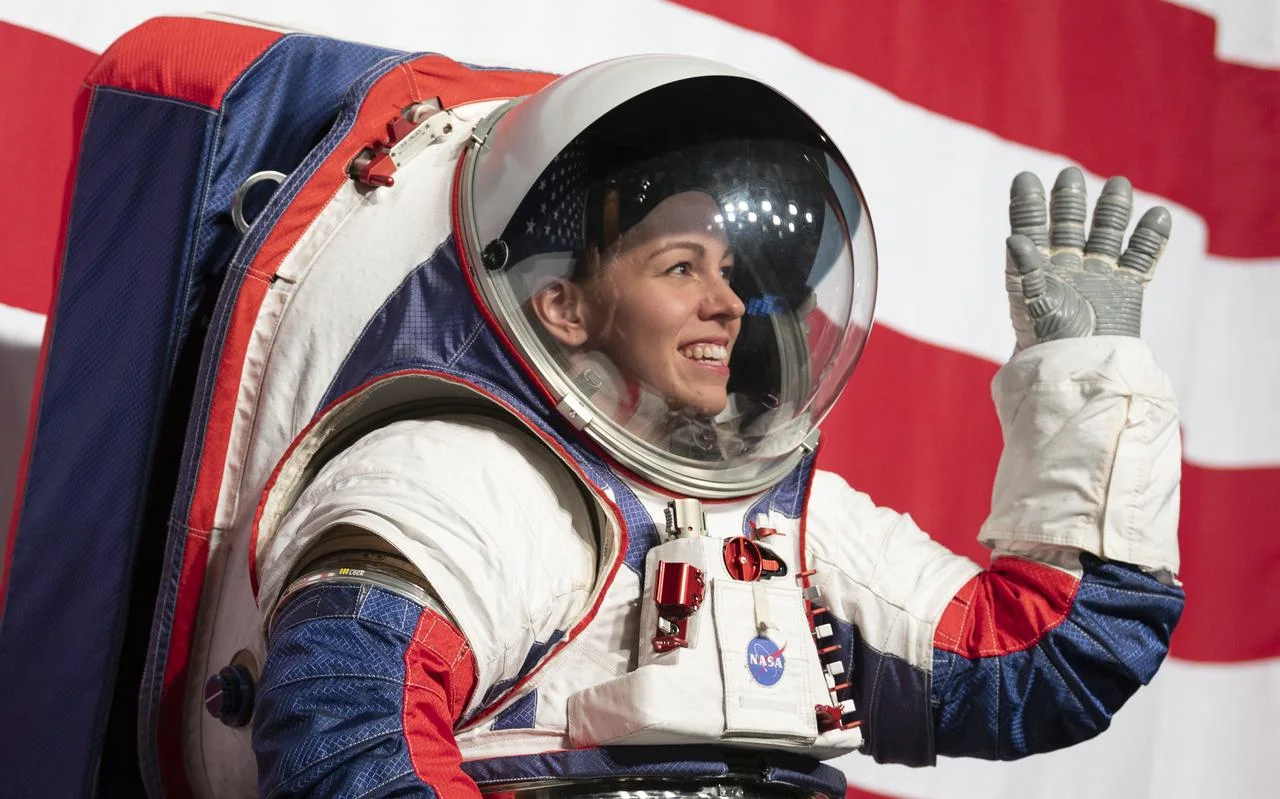
Spacesuit engineer Kristine Davis showed off the xEMU's improved mobility and flexibility during the Oct. 15, 2019, NASA event. Credit: NASA/Joel Kowsky
For anyone who has watched footage of the Apollo astronauts hopping around on the surface of the Moon, it's fairly obvious that the suits they wore were bulky and restrictive. While they could get around and were fully protected from the deadly lunar environment, the crew would likely have been able to get far more done, and more easily, if their suits would have allowed more freedom of movement.
According to NASA, the new xEMU suit offers the same protection as the originals, but it allows the wearer improved flexibility and freedom of movement. During the NASA unveiling, Davis showed off how she could pivot at the waist, bend and crouch, all with the suit accomodating her movements.
The new suit is also customizable to fit a range of sizes.
While the current design prototype is intended for the Moon, NASA says that xEMU can be upgraded for the Martian environment, in the future.
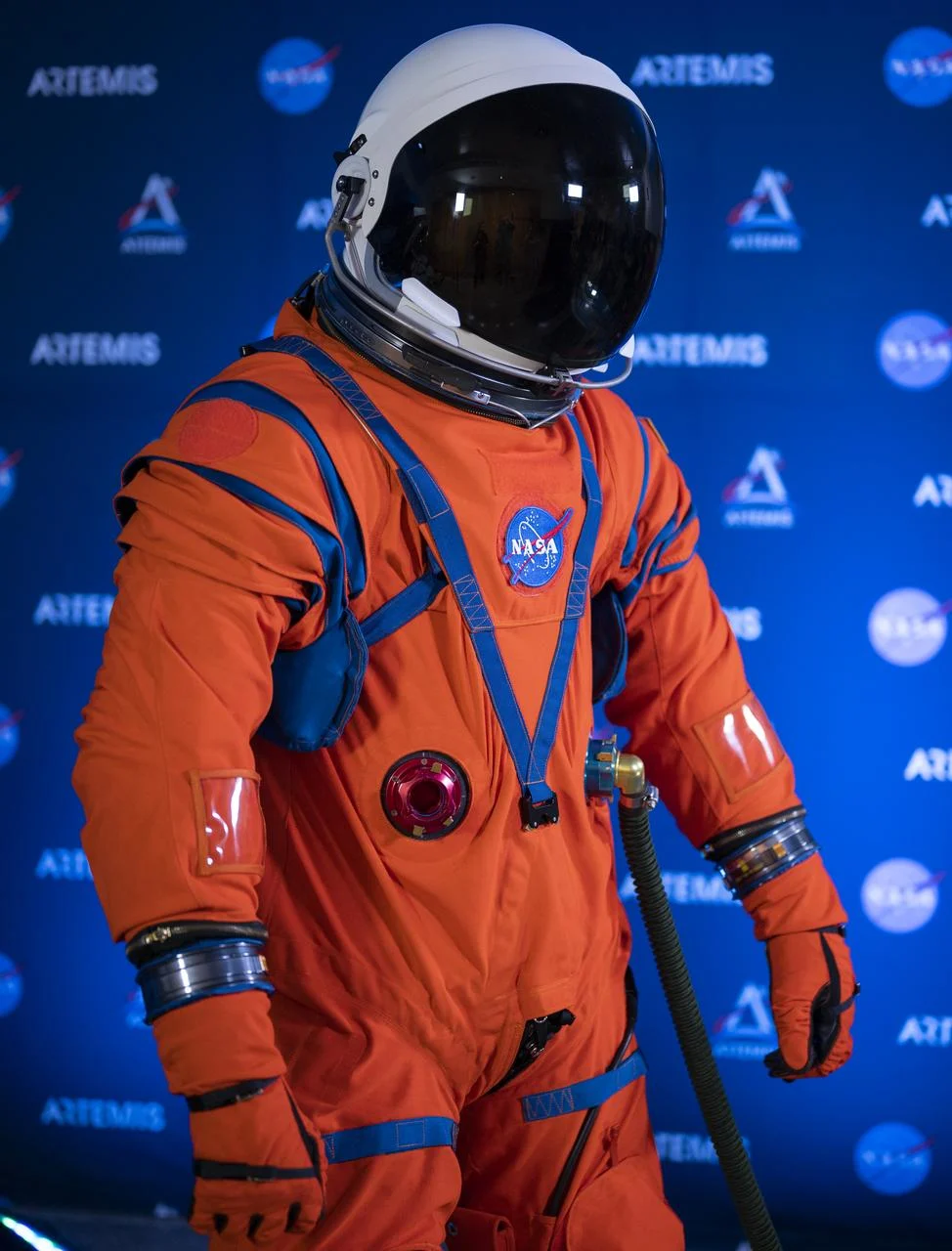
Dustin Gohmert, Orion Crew Survival Systems Project Manager at NASA's Johnson Space Center, poses for a portrait while wearing the Orion Crew Survival System (OCSS) suit, Tuesday, Oct. 15, 2019 at NASA Headquarters in Washington, DC. Credit: NASA/Joel Kowsky
When astronauts are launching into space or returning to Earth, they wear a specialized spacesuit that is capable of protecting them, should there be a problem, such as loss of capsule pressure, but which is far less bulky than the large EVA suits that are worn on spacewalks.
According to NASA, this new Orion suit "is designed for a custom fit and incorporates safety technology and mobility features that will help protect astronauts on launch day, in emergency situations, high-risk parts of missions near the Moon, and during the high-speed return to Earth."
Sources: NASA | NASA Space Station










